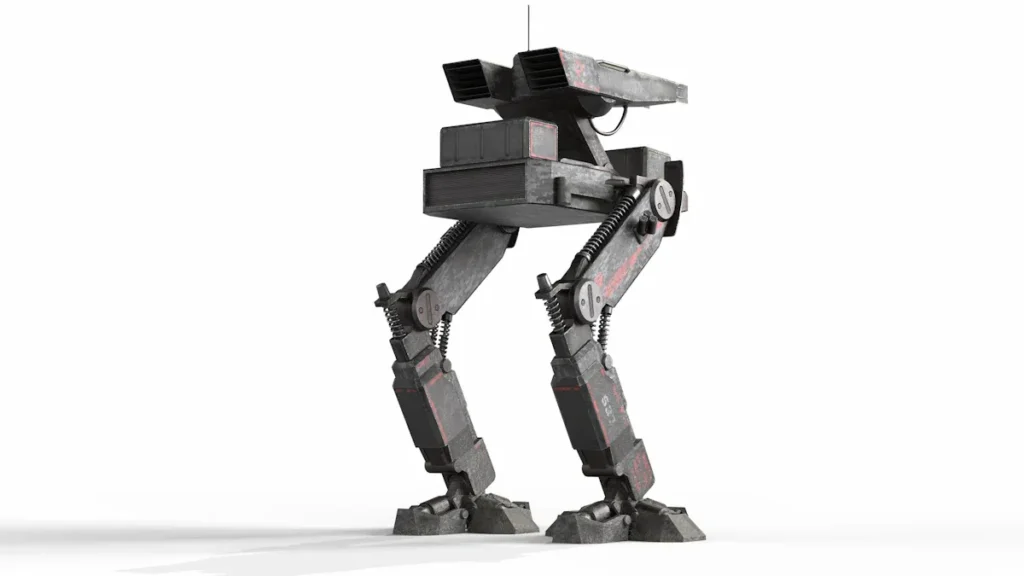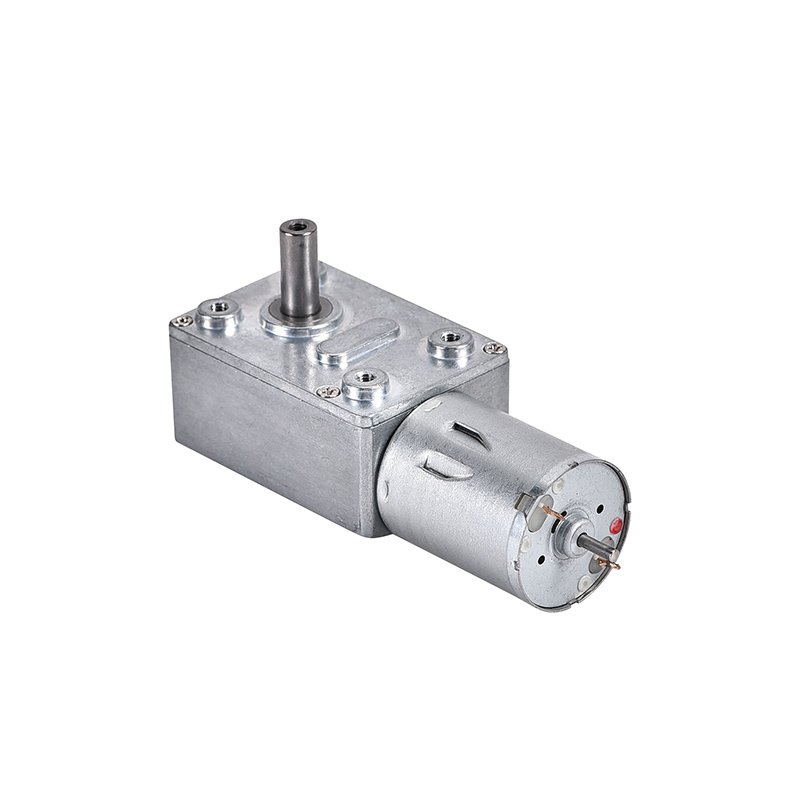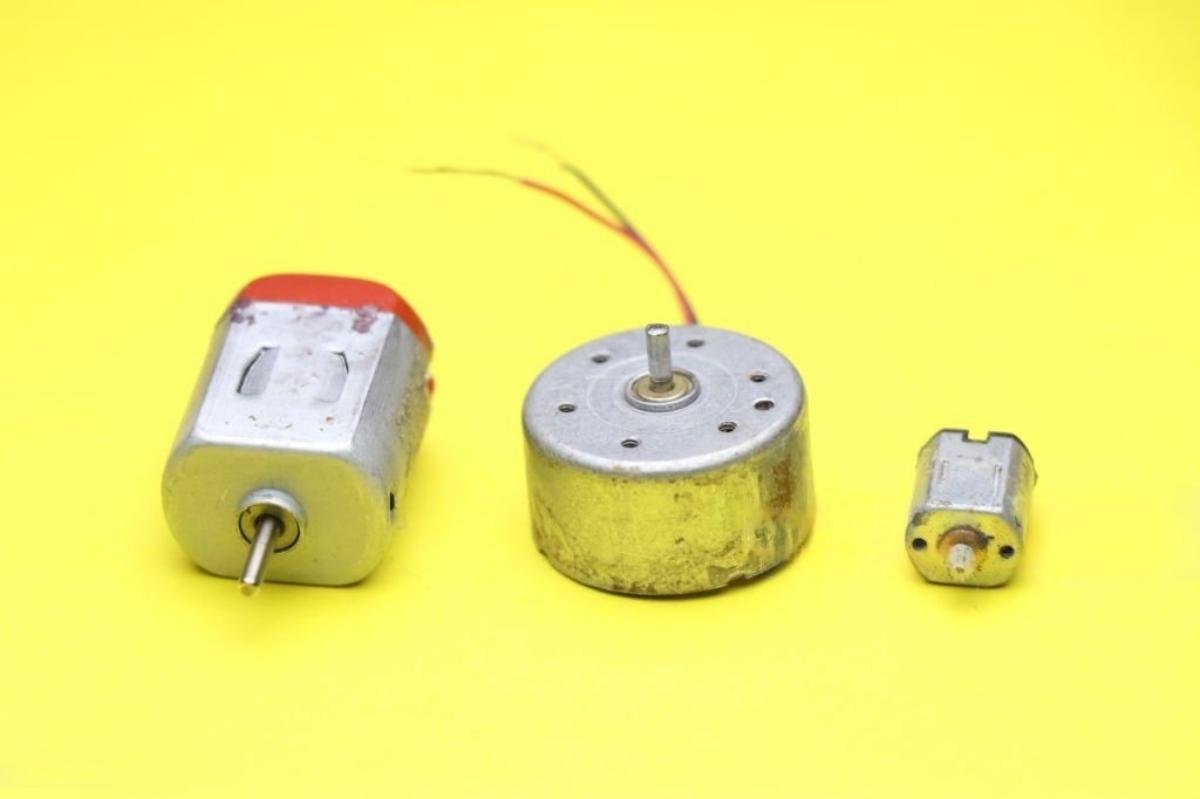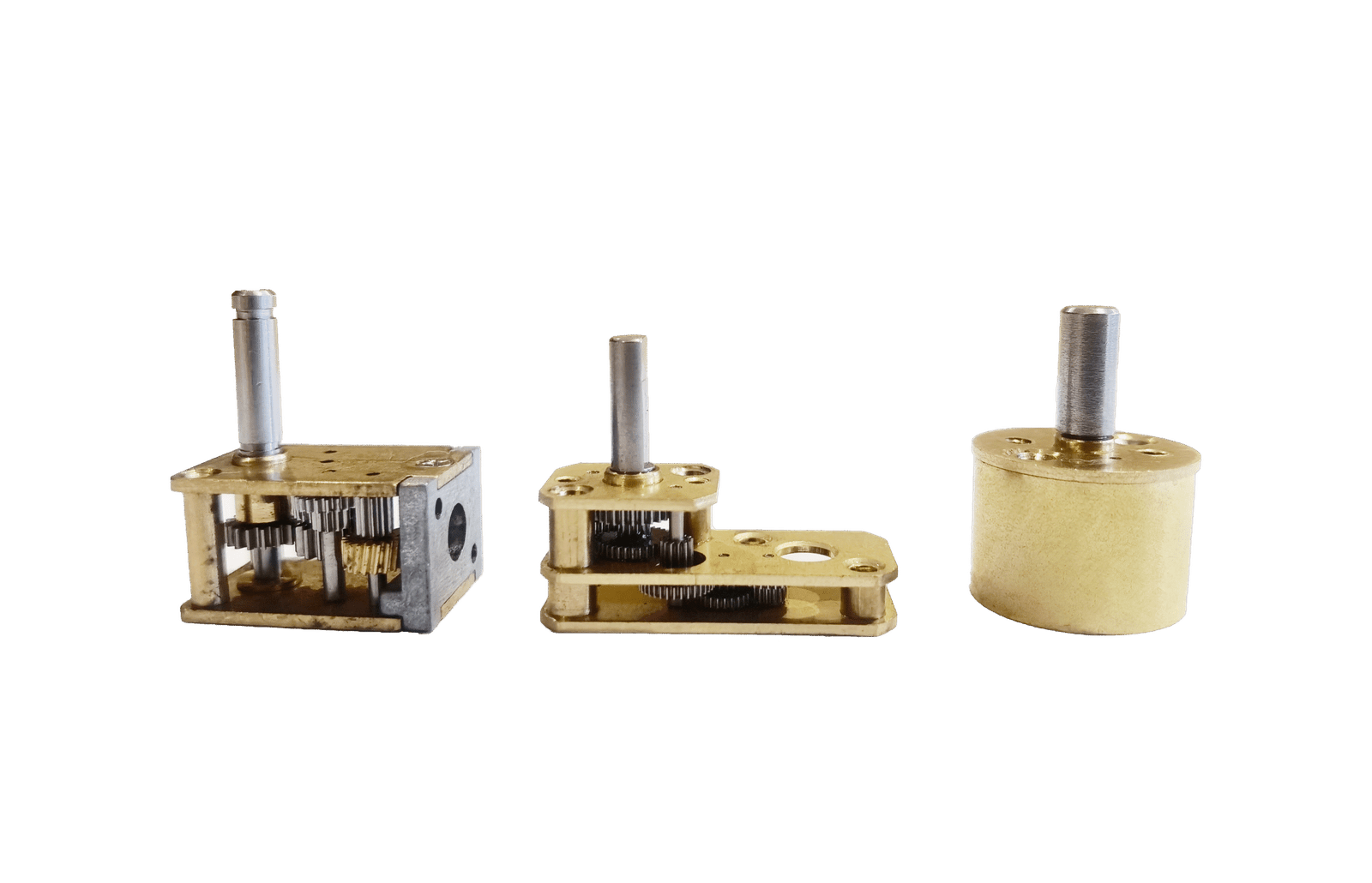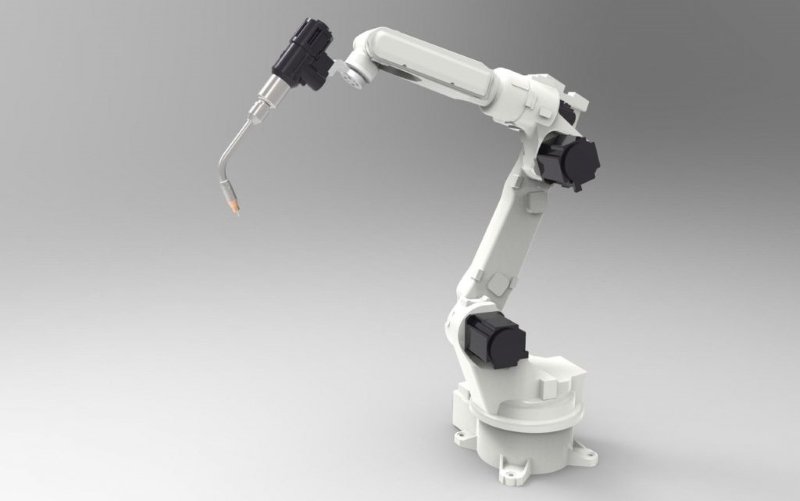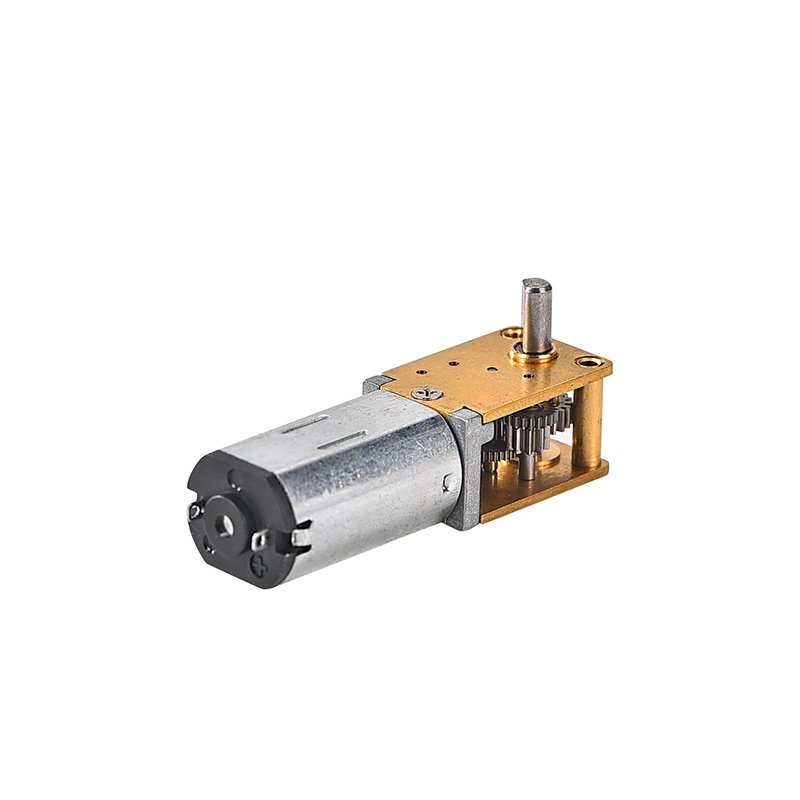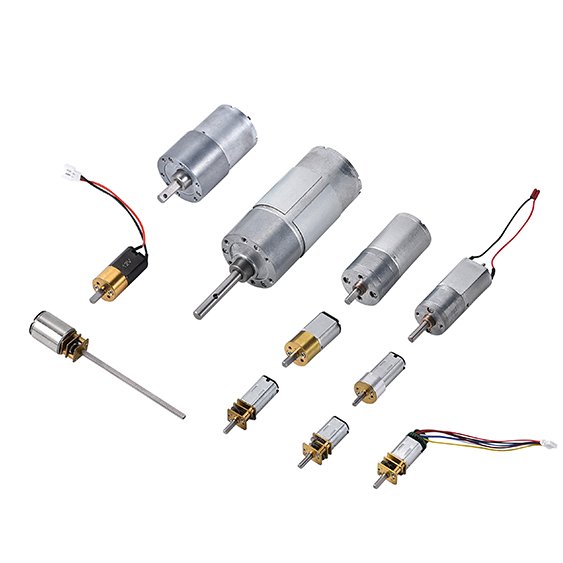Walking robot engineers have big problems when they make gear motor systems for robots with legs. Most new bipedal robots, like the LEO robot, use electric drives with gears close to the body. This setup makes the legs lighter and helps the robot move with more control and speed. Bipedal and other legged robots must solve many problems to move well:
Handling hard movement control because of tricky dynamics and many ways the robot can move.
Keeping balance by using layered motor control and reflex-based ideas.
Making sure the robot saves energy and stays steady, especially when walking changes on rough ground.
Using sensory feedback to help the robot walk in a steady way.
Bioinspired parts, smart control plans, and good energy use are very important for better bipedal movement. Engineers and hobbyists can use these ideas to make robots walk in a steady, safe, and smart way.
Key Takeaways
Walking robots must keep good balance and use smart control to walk safely on many surfaces. Choosing the best motors and gear ratios helps robots move quickly and carry heavy things. Using sensors like force sensors and accelerometers helps robots change their steps and not fall down. Good mechanical design and energy-saving parts help robots last longer and work better. Bipedal robots are lighter and faster but need careful control. Quadruped robots are more stable and do better on rough ground.
Walking Robot Locomotion Needs
Stability and Balance
Stability is very important for robots with legs. Engineers need to make robots that can stay balanced on flat or bumpy ground. Robots must change how wide and long their steps are to keep from falling. This is extra important when the ground changes. Keeping side-to-side balance matters more than front-to-back movement. Real places can be tricky, so robots must react fast to stay steady. Kinematic leg drives and bioinspired actuators help robots handle bumps and different surfaces. These ideas help robots stay balanced and not fall, even when they hit things.
Tip: Try using task-space impedance control and hybrid admittance control. These help robots stay balanced if they bump into something while walking.
Power and Torque
Power and torque are needed for robots to walk well. The robot needs enough force to lift and move its body. Actuators and gear reducers work together to give each joint the right torque. In bipedal and quadruped robots, the power system gives energy to the motors. Engineers pick gear ratios that balance speed and force. This helps robots move well on all kinds of ground. Bioinspired actuators with series elasticity help take in shocks and lower mistakes. They also help save energy. This makes robots move better and stay steady in real life.
Precision and Efficiency
Precision and efficiency help robots walk better. Good gearboxes and reducers let engineers control torque and speed well. This makes robots walk smoother and with fewer mistakes. Efficient gear motor systems use less energy and last longer. They also need less fixing. Coreless motors, brushless DC motors, and servo motors all have their own good points for robots with legs. Picking the right parts helps robots move just right and not waste power. Energy-saving designs let robots work longer and do more jobs each day.
Bipedal Locomotion Gear Motors
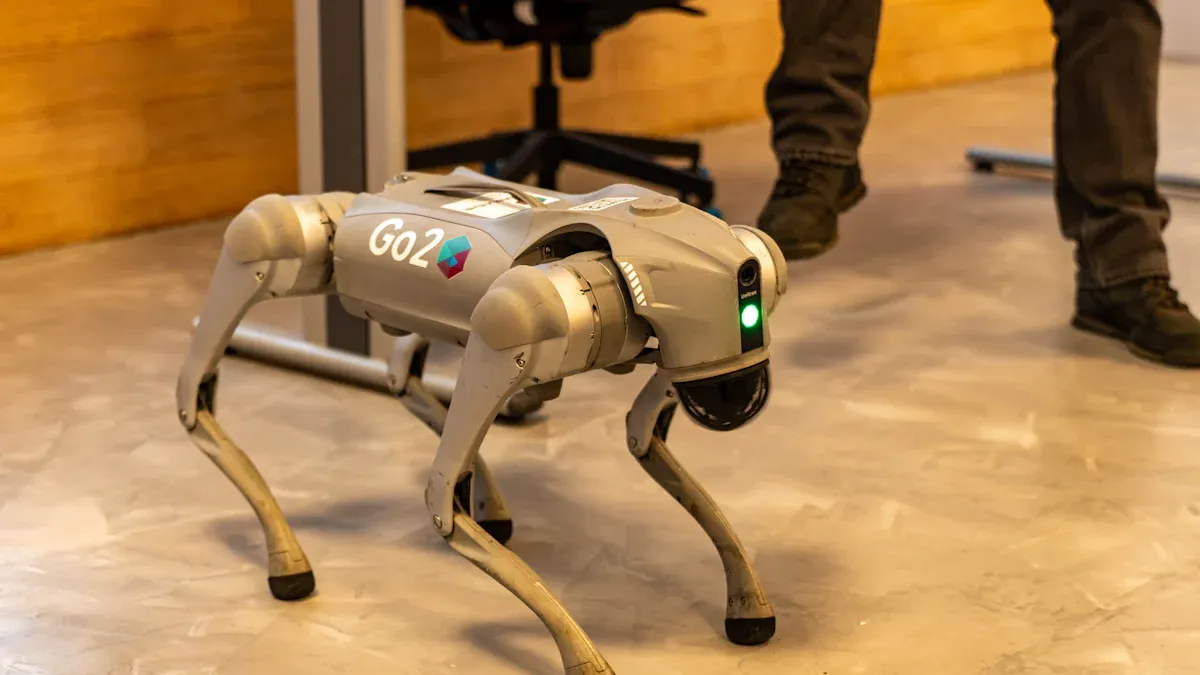
Motor Types
Engineers need to pick the right gear motors for bipedal robots. The most used motor types for these robots are:
DC Motors: These motors move the robot’s legs or joints. They give strong force and can be controlled well with sensors. DC motors help the robot walk smoothly and react fast.
Servo Motors: Many robots use servo motors to move their joints. Servo motors are small and simple to use. They let the robot move its legs at exact angles, which is important for walking.
Stepper Motors: Stepper motors help the robot move its legs to the right spot. They can hold their place without extra force. This helps the robot stop or balance while walking.
Linear Actuators: These make parts move in a straight line. Engineers use them with other motors to stretch or pull back the legs. This helps the robot walk in more ways.
Pneumatic or Hydraulic Actuators: Big robots sometimes use these. They give a lot of force, which helps the robot lift heavy things or walk on rough ground.
Tip: Think about the robot’s weight, how many joints it has, and how fast you want it to walk. Try different motors to see which works best for your robot.
Torque and Speed
Torque and speed are very important for how bipedal robots walk. Gear ratios change how fast and strong the robot’s legs move. Engineers must find the right mix to make the robot walk well.
Small gear ratios make the legs move faster. These use the robot’s own weight to help move, which makes it easier to move the legs back and forth. This is good for quick, light steps.
Large gear ratios help the robot carry more weight. They give more force but make the legs move slower. This is better for slow, strong moves like holding up the robot’s body.
Variable gear-ratio actuators (VGA) can switch between fast and strong settings. This lets the robot pick the best speed or strength for each part of walking. For example, it can move the leg fast when swinging and use more force when standing.
Control algorithms can pick the best gear ratio by themselves. These help the robot use less power and work better while walking.
Changing gear ratios while walking lets the robot move fast and carry heavy loads. This helps the robot handle bumps and changes in the ground.
Note: Always try out gear ratios with your robot’s controller. Change the ratios to fit how your robot walks and the ground it will walk on.
Control and Sensors
Good control and sensors are needed for safe bipedal walking. Engineers use real-time feedback to keep the robot steady and quick.
Studies show that accelerometers and force sensors work best for feedback in bipedal robots. These sensors measure things like joint angles, speed, leg position, and how the robot’s weight moves. This data helps the robot’s controller check if each step is safe and make fast changes. With these sensors, the robot can guess if a step will be steady before it takes it. This helps stop falls and keeps the robot balanced.
Modern robots use smart gait control algorithms to walk better. The table below shows new trends and ways to control bipedal walking:
Advancement Trend | Description | Key Methods / Examples |
|---|---|---|
Learning Strategy-based | Helps the robot learn and get better at walking by itself. | Central Pattern Generation (CPG), Neural Networks (NN), Reinforcement Learning (RL); adaptive walking, system identification, online adaptability |
Multimodal Gait Control | Lets the robot use different ways of walking and switch between them. | Gait libraries, decision-making for mode switching, trajectory tracking |
Compliant Gait Control | Makes the robot better at walking on rough ground and taking hits. | Impedance and admittance control, walking templates with leg compliance |
Engineers can use these control ideas to help the robot walk in new places and do new jobs. For example, Central Pattern Generation (CPG) makes the robot’s legs move in a rhythm like animals. Neural Networks (NN) help the robot learn hard moves and change when things are different. Reinforcement Learning (RL) lets the robot get better at walking by learning from what happens.
Tip: Use sensor feedback with smart control algorithms for the best bipedal walking. Test your robot’s controller on many surfaces to make sure it walks well.
Quadruped Gear Motor Systems
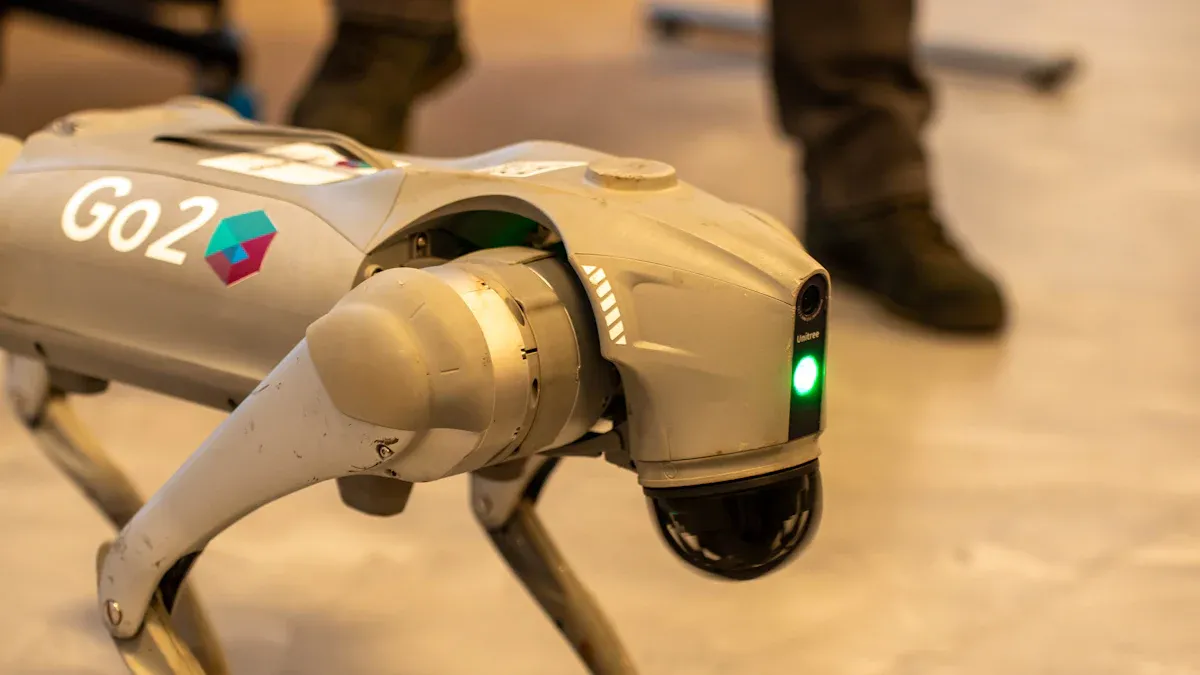
Leg Mechanisms
Quadruped robots need legs that are strong and can bend. This helps them move on many types of ground. Engineers often pick serial or parallel leg designs. The two-part serial leg is used the most. It is simple and works for many jobs. Some quadruped robots use hydraulic actuation for more force. This helps them walk on rough ground and carry heavy things. Bio-inspired designs add flexible backbones and ways to store energy. These features help robots save energy when they trot or gallop. If the robot’s trunk can bend and store energy, it moves more like animals and uses less power.
To make good legged robots, engineers use special design methods. They try to balance force, speed, and strength. Evolutionary algorithms help find the best leg shapes and structures. Hydraulic legs can send up to 94% of force, but engineers must watch for energy loss in pumps and valves. Adding flexible parts and elastic pieces helps robots move better. But it also makes control harder. Engineers must test different leg designs to see which works best for their robot and the ground.
Tip: Use elastic parts in the legs to store and release energy. This helps the robot move faster and use less power on bumpy ground.
Synchronization
Synchronization makes sure all four legs move in the right way. In quadruped robots, engineers use control plans like Central Pattern Generators (CPGs). CPGs use special oscillators to time each leg’s movement. This helps the robot keep a steady gait, especially on smooth ground.
Sometimes, the robot hits bumps or the ground changes fast. Then, synchronization can break. Engineers use the Kinetic Momentum Management Algorithm (KMMA) to fix this. KMMA lets each leg keep its own stride and step size. This works even if the robot faces big bumps. This way, the robot does not need extra control systems. It stays steady when running or turning.
Synchronization plans help robots control speed, direction, and balance. By keeping walking steps steady, the robot can handle new ground and stay safe. Engineers should try different synchronization plans to find the best one for their robot.
Note: Always check how the robot walks on different ground. Change synchronization settings to keep the robot steady and save energy.
Distributed Control
Distributed control lets quadruped robots react fast to ground changes. Each leg has its own controller and sensors. This setup lets the robot make choices right at each leg. The robot does not need to send every signal to a main computer. This cuts down on delays and helps the robot stay steady.
Distributed control makes robots stronger and more efficient, especially on rough ground. Local control loops use force and torque sensor data at the feet. This lets the robot change its leg moves right away. If one leg touches the ground early, the local controller can change its path fast. The robot does not have to wait for high-level commands. This makes the robot more independent and better at handling surprises.
Engineers use distributed control to connect many sensors and moving parts, like fake spines. This helps the robot change its shape and keep balance. The robot can use stable gaits and move its center of gravity to stay upright. Multi-point-contact feet, with sensors, help the robot grip and move over hard ground.
Gear motor systems are important for handling different ground. High-torque actuators with low-ratio planetary gearboxes give strength and flexibility. These gear motors let the robot move backward if needed. The robot can react to outside forces and change its moves. Control plans use sensor data from IMUs and joint encoders to guess the slope and support surface. The robot then changes its body and legs to get the best grip and stay steady.
Some quadruped robots use smart systems like Rapid Motor Adaptation (RMA). These systems learn from the robot’s moves and sensor data. The robot can change its walk and force in real time, even on new or slippery ground. This mix of smart design and control helps robots handle tough, changing places.
Tip: Use distributed control to handle sensor data at each leg. This helps the robot react faster and stay steady on rough ground.
Feature | Benefit for Quadruped Robots | How-To Implementation Example |
|---|---|---|
Local Control Loops | Fast reaction to terrain changes | Place controllers on each leg |
Multi-point-contact Feet | Better traction and terrain adaptation | Add sensors to each foot |
High-torque Gear Motors | Strong, flexible movement | Use low-ratio planetary gearboxes |
AI-driven Adaptation | Real-time gait and force adjustment | Integrate RMA or similar systems |
By using smart leg designs, good synchronization, and distributed control, engineers can make quadruped robots that move well, handle any ground, and stay steady. These solutions help teams build robots ready for real-world jobs.
Robot Locomotion Engineering
Mechanical Design
Mechanical design affects how well robots move. Engineers work on gear motor integration, spring placement, and frame structure. They use parallel springs to help motors do less work. This saves power and makes batteries last longer. Smaller motors make less heat. The table below lists important design points and how they help robots with legs:
Consideration | Description | Impact |
|---|---|---|
Parallel Compliance (Springs) | Springs help motors use less power | Smaller motors, less heat, longer battery life |
Performance Metrics Selection | Pick the best ways to measure robot performance | Better motor size and system efficiency |
Inertia Matching Principle | Match gear ratios to balance motor and load inertia | Faster, more efficient actuator performance |
Dynamic Trajectory Loading | Use real walking data to pick motors and transmissions | Makes sure choices work in real robot movement |
Spring Stiffness Trade-offs | Balance spring stiffness for speed and power savings | Find the best stiffness for each robot movement |
Engineers must balance torque and speed. More torque makes robots walk faster but uses more energy. The chart below shows how mechanical cost changes with torque:
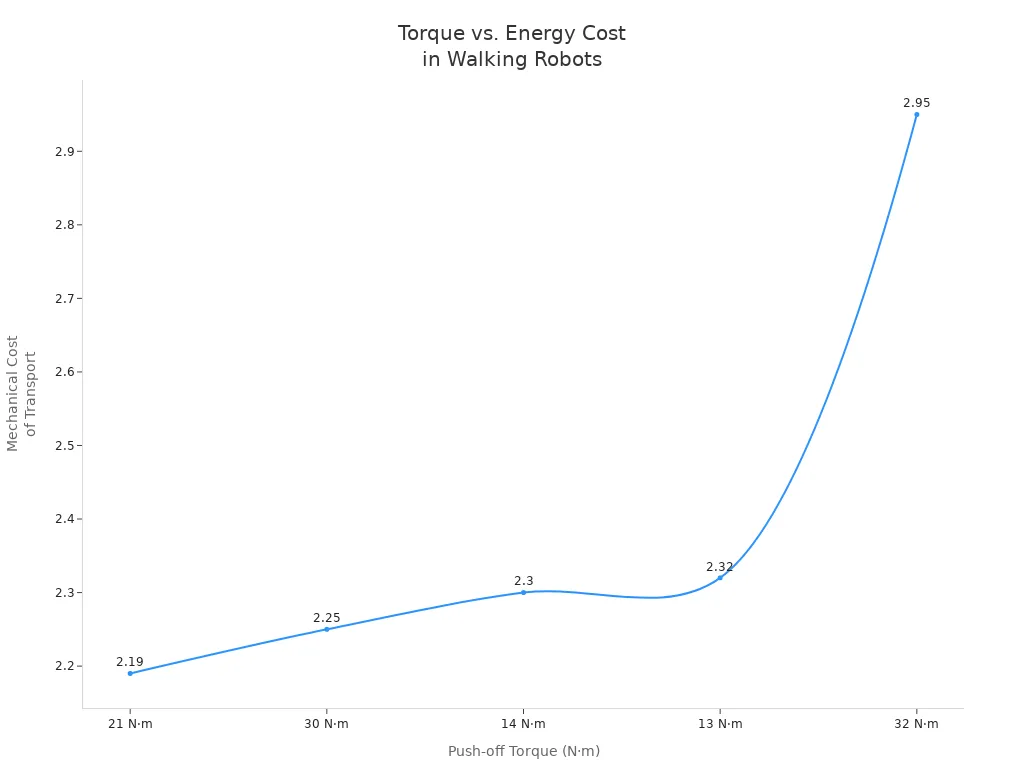
Reconfigurable frameworks help robots do new jobs. These let robots change how they move for different ground. Modular parts and adjustable wheels make robots more flexible and strong.
Sensor Integration
Sensor integration helps robots walk more accurately. Engineers use many sensors like laser scanners, gyroscopes, accelerometers, force-torque sensors, and pressure sensors. They mix these sensors using sensor fusion. This blends kinematics, inertial, vision, and LIDAR data for better state estimation.
Learning-based strategies use world models to clean sensor data. These models help robots handle sensor noise and changes in the real world. Engineers use trajectory generators with sensory feedback. This lets robots walk on rough ground. Pressure sensors in robot feet give contact data. This helps with grip and smooth walking.
Tip: Try mapping algorithms and artifact removal. These help robots see the ground better with cheap sensors.
Control Algorithms
Control algorithms tell robots how to move. Engineers use several main control methods:
Control Algorithm | Description | Strengths | Limitations |
|---|---|---|---|
Central Pattern Generators | Copy animal rhythms for moving legs | Adaptive, rhythmic, bio-inspired | Not as good on tricky ground |
Model Predictive Control | Plans actions using future predictions | Good at recovery, balanced control | Needs a lot of computer power |
Reinforcement Learning | Learns from experience to walk better | Handles problems, saves energy | May not work well on new ground |
GA-Optimized PID Controllers | Uses genetic algorithms to tune PID | Accurate, fast, less error | Harder to use on real robots |
Engineers often mix these algorithms for hybrid control. For example, they use CPGs for basic walking and MPC for balance. This helps robots with legs stay steady and efficient in real life.
Energy Management
Energy management helps robots work longer. Engineers pick motors, drives, and controllers that use less energy. They write programs to stop wasting power. Regular checks keep all parts working well and save energy. Regenerative braking lets robots get energy back when moving.
Pick efficient parts to save energy.
Program robots to not waste power.
Keep robots in good shape to save energy.
Use regenerative braking to get energy back.
These steps help robots with legs last longer and work better. Good energy management means robots are more efficient, reliable, and cost less to run.
Bipedal vs Quadruped Locomotion
Strengths and Weaknesses
Engineers look at bipedal and quadruped robots to see which works best. Each type has good and bad points for moving in the real world. The table below shows how they are different in gear motor needs, balance, and control:
Aspect | Quadruped Locomotion | Bipedal Locomotion |
|---|---|---|
Motor Torque Requirements | Needs stronger motors for balance and long legs. | Uses less torque, but needs careful control. |
Gear Ratio | Uses bigger gear ratios for more force, but slower. | Harder control changes how motors work. |
Stability | Four legs make it steady, can use strong motors. | Two legs are less steady, needs smart control. |
Control Complexity | Easier to control because it stands well. | Harder to control, needs more computer power. |
System Weight and Complexity | Heavier because of big motors and gears. | Lighter, but control is harder. |
Speed | Not as fast because it focuses on strength. | Can go faster, but staying balanced is tough. |
Bipedal robots move in a lively way and are lighter. But they need smart control to keep from falling. Quadruped robots are steadier and can walk on rough ground. But they are heavier and not as quick.
Application Scenarios
Bipedal and quadruped robots are used for different jobs. The table below shows where each type works best:
Robot Type | Common Application Scenarios | Description and Examples |
|---|---|---|
Bipedal Robots | Used for building things, fixing, and risky jobs. Example: Digit robot. | |
Bipedal Robots | Help people get better, care for patients, and help the elderly. | |
Bipedal Robots | Search and Rescue Missions | Go through dangerous places, rubble, and gaps. Good for nuclear or underwater work. |
Bipedal Robots | Entertainment and Education | Act as fun teachers, performers, or game partners. |
Quadruped Robots | Complex Terrain Navigation | Walk over soft, tricky ground with special control. |
Quadruped Robots | Imitation of Animal Motions | Move like animals and do cool tricks. |
Quadruped Robots | Loco-manipulation Tasks | Use legs to walk and do tasks at the same time. |
Quadruped Robots | Research and Development | Try out new control ideas and ways to walk on rough ground. |
Bipedal robots fit places made for people. Quadruped robots are better outside and in tough places.
Design Tips
Engineers can make robots walk better by using these tips:
Use linked parts like four-bar or pantograph to make bipedal robots move well with fewer motors.
Pick strong materials that match where the robot will go.
Choose the power system early so it works with the motors.
Add sensors that help with the robot’s job, like ones for seeing obstacles or feeling the ground.
Make the robot’s body easy to open for battery and sensor checks.
Test moving parts before building the whole robot to check balance.
Use 3D printing or CNC milling to make strong, exact parts.
Keep the design simple, easy to control, and save energy for the best walk.
Note: Do not use springs that do not match, heavy motors, or bad gearboxes. Watch out for control problems and designs that are hard to use. These can make the robot less steady and less comfortable for people.
A walking robot needs the right gear motor system and control plan. This helps the robot move strong and stay steady. Engineers should pick control strategies for each robot and job. Bipedal locomotion works best with adaptive control. This type of control changes timing, stiffness, and force for every step. Quadruped robots use rhythmic controllers to keep their walk steady. Bioinspired ideas, like double curriculum learning and Central Pattern Generators, help bipedal robots learn new ways to walk and handle changes. Engineers can make robots walk better by testing and tuning new adaptive methods. Do not make common mistakes. Keep learning about bipedal locomotion to get better results.
FAQ
How can someone choose the right gear motor for a walking robot?
First, look at how heavy the robot is. Count how many joints the robot has. Think about how fast you want it to move. Try out different motors and gear ratios to see what works. Make a table to compare torque, speed, and efficiency. This helps you pick the best motor for your robot.
What sensors help improve robot walking stability?
Force sensors, accelerometers, and gyroscopes give feedback right away. These sensors help the robot change its steps to stay balanced. Engineers often mix data from all the sensors for better results. This is called sensor fusion.
How does someone reduce energy use in walking robots?
Pick motors and gearboxes that do not waste energy. Add springs to help support the robot’s joints. Use regenerative braking to save power when the robot slows down. Smart control algorithms also help use less energy. Keep the robot in good shape with regular checks.
What is the best way to test a new walking robot design?
Start by testing the robot on flat ground. Add obstacles and rough spots slowly. Record what the sensors show during each test. Change the control settings if needed. Test each part before putting the whole robot together. This helps you find problems early.
